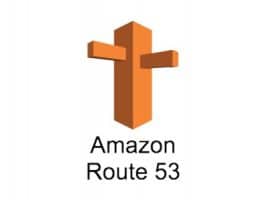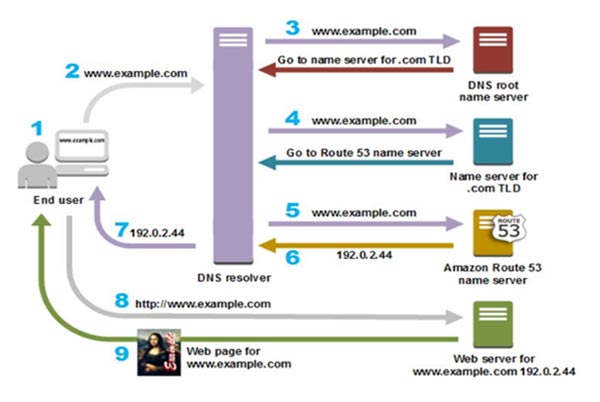- Mon-Sat 8.00 - 20.00
- (+84) 976-099-099
Amazon Route 53
Amazon Route 53 is a highly available, reliable and cost-effective service for managing domains offered by AWS. It is a scalable Domain Name System (DNS) service named by the TCP or UDP port 53, which is where DNS server requests are addressed. Like any DNS service, Route 53 handles domain registration and routes users’ Internet requests to your application — whether it’s hosted on AWS or elsewhere.

AWS Services
Route 53 is mainly used for 3 purposes:
DNS Registration
Route Internet Traffic
Check Health Status

Benefits of using Amazon Route 53
- Highly available and reliable: The DNS Failover feature can detect an outage of your website and redirect your users to other locations where your application is up and running. This increases redundancy to your website and helps maintain availability for your end users.
- Flexible: Route 53 Traffic Flow allows you to route traffic based on latency, endpoint health, and geographic location. You can create traffic flow rules using the simple visual editor in the Route 53 API or Route 53 console.
- Designed for use with other Amazon Web Services: you can use Route 53 with other features of Amazon Web Services. You can map domain names to your Amazon S3 buckets, Amazon EC2 instances, and other Amazon Web Services resources.
- Fast: The service uses a network of DNS servers to connect users to areas with stable network conditions automatically. Consequently, the service provides low update latency for your DNS record management needs and low query latency for your users.
- Cost-effective: With Route 53, you only pay for the resources you use. These include hosted zones, the number of queries the service answers for each of your domain and optional features such as health checks and traffic policies.
- Secure: You can integrate Route 53 with AWS Identity and Access Management to grant permissions and credentials for any user within your AWS account.
- Scalable: Amazon Route 53 come with a feature of scaling up and down depending upon the traffic.
Choosing a Routing Policy
When you create a record, you choose a routing policy, which determines how Amazon Route 53 responds to queries:
- Simple routing policy– Use for a single resource that performs a given function for your domain, for example, a web server that serves content for the example.com website.
- Failover routing policy– Use when you want to configure active-passive failover.
- Geolocation routing policy– Use when you want to route traffic based on the location of your users.
- Geo-proximity routing policy– Use when you want to route traffic based on the location of your resources and, optionally, shift traffic from resources in one location to resources in another.
- Latency routing policy– Use when you have resources in multiple AWS Regions, and you want to route traffic to the region that provides the best latency.
- Multi-value answer routing policy– Use when you want Route 53 to respond to DNS queries with up to eight healthy records selected at random.
- Weighted routing policy– Use to route traffic to multiple resources in proportions that you specify.
Disclaimer: I am the author at PLM ECOSYSTEM, focusing on developing digital-thread platforms with capabilities across CAD, CAM, CAE, PLM, ERP, and IT systems to manage the product data lifecycle and connect various industry networks. My opinions may be biased. Articles and thoughts on PLMES represent solely the author's views and not necessarily those of the company. Reviews and mentions do not imply endorsement or recommendations for purchase.
